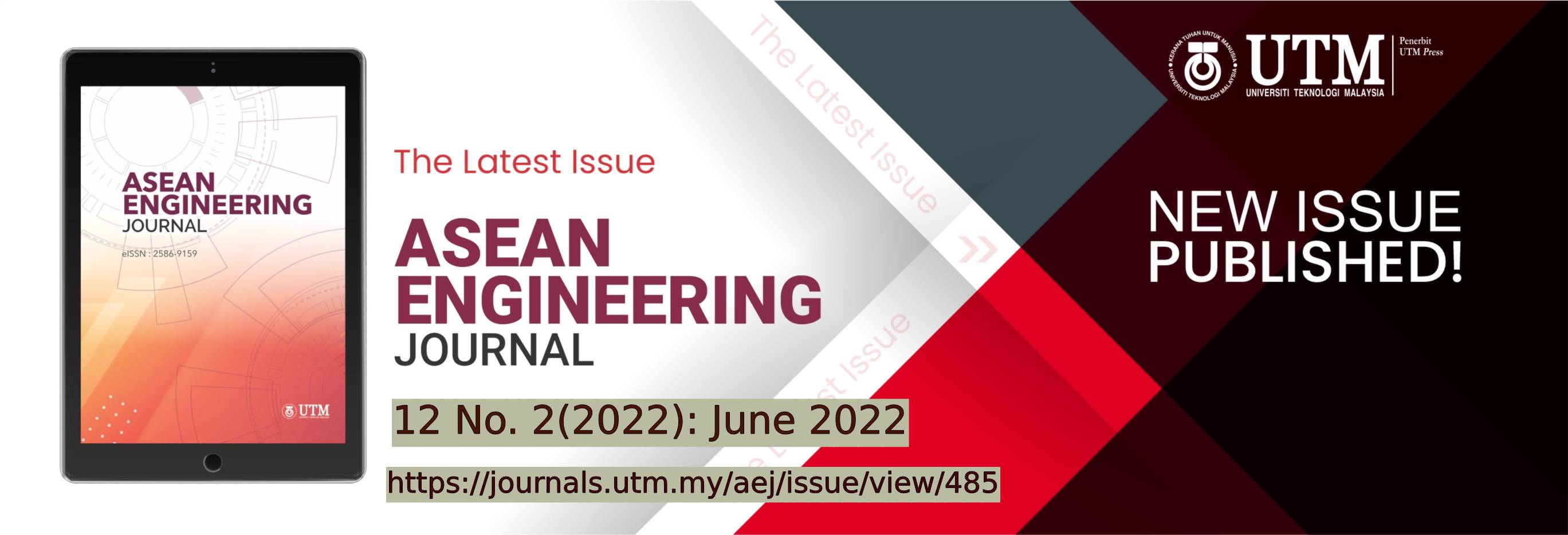COMPONENT-BASED SEVERE WIND VULNERABILITY ANALYSIS OF WOODEN BUILDINGS IN THE PHILIPPINES
DOI:
https://doi.org/10.11113/aej.v12.17463Keywords:
Severe Wind, Vulnerability, Analysis, Wooden, Buildings, PhilippinesAbstract
The Northwestern Pacific Ocean Basin is home to the strongest tropical cyclones in the world, called typhoons. The Philippines is situated as the gateway for the typhoons developing in the Northwestern Pacific Basin. As a result, the country is being exposed to the risk brought by significantly strong typhoons that occur more than once annually. Lightweight buildings, particularly wooden buildings, and their structural components are the most vulnerable to severe winds. This study aims to perform vulnerability analysis on wooden buildings, by developing vulnerability curves that relate the magnitude of severe winds to the variation of damages and by establishing the probabilities of identified damage states of the buildings at certain wind speeds - which are called fragility curves. This study employs an improved framework from a heuristic-empirical-computational methodology previously used in determining GMMA-RAP vulnerability curves. This enhanced framework uses a component-based Monte Carlo vulnerability analysis to determine the improved vulnerability curve to account for the statistical variations of documented building damage from severe winds. A maximum, average, and minimum vulnerability curve were developed by fitting a cumulative lognormal distribution function wherein the mean parameters are 250.92, 425.89, 148.80, and the variance parameters are 0.579, 0.257, 0.433, respectively—the functions used an offset of 72 kph for all the developed curves. The developed curves were then compared to empirical field survey data, wherein 71.43% of the empirical data was within the developed envelope.
References
McCurry, Justin. 2009 “Philippines Struggles to Recover From Typhoons.” Lancet
Agar, Joshua, William Mata, and Jaime Jr. Hernandez. 2018. "Estimating Typhoon Haiyan's Wind Speeds Using Windicators." Philippine Engineering Journal, 39(1): 29-42.
Schneider, Phillip, and Barbara Schauer. 2006."HAZUS—Its Development and Its Future." Natural Hazards Rev., 7(2): 40-44,
Pacheco, Benito, Jaime Jr. Hernandez, Peter Castro, Eric Tingatinga, Raniel Suiza, Liezl Tan,Romeo Longalong, Clarissa Veron, Harold Aquino, Richmark Macuha, William Mata, Imee Villalba, Claire Pascua, Ulpiano Jr. Ignacio, Fernando Germar, Joseph Diño, Gian Reyes, Lemar Tirao, and Mark Zarco. 2014. "Development of Vulnerability Curves of Key Building Types in the Greater Metro Manila Area, Philippines".
Gumaro, Joshua Joseph C., Acosta, Timothy John S., Tan, Liezl Raissa E., Agar, Joshua C., Tingatinga, Eric Augustus J., Musico, John Kenneth B., Plamenco, Dean Ashton D., Ereño, Mary Nathalie C.,Pacer, Jihan S., Villalba, Imee Bren O. and Hernandez, Jaime Y. Jr. 2021"Identification of key components for developing building types for risk assessment against wind loadings: The case of Cebu Province, Philippines", International Journal of Disaster Risk Reduction. 64(2022): 102686. DOI: http://doi.org/10.1016/j.ijdrr.2021.102686
Tan, Liezl. 2014. "Wind Vulnerability Assessment Of Enhanced Wind Resilient Design For A Standard 1-Storey School Building In Tacloban Using Component-Based Approach in Reliability Modeling". Graduate thesis,
Tan, Liezl Raissa E., Acosta, Timothy John S., Gumaro, Joshua Joseph C.,Agar, Joshua C., Tingatinga, Eric Augustus J., Plamenco, Dean Ashton D.,Ereno, Mary Nathalie C., Musico, John Kenneth B., Pacer, Jihan S., Baniqued, Julius Rey D., Hernandez, Jaime Jr. Y., Villalba, Imee Bren O. 2021. Investigation of the Effects of the Classification of Building Stock Geometries Determined Using Clustering Techniques on the Vulnerability of Galvanized Iron Roof Covers Against Severe Wind Loading. In IOP Conference Series: Materials Science and Engineering 1150(1): 012024. IOP Publishing. DOI: http://dx.doi.org/10.1088/1757-899X/1150/1/012024
Nishijima, Kazuyoshi, Hiroaki Nishimura, Liezl Tan, Jaime Jr. Hernandez. "Study on wind vulnerability of non-engineered houses in Leyte Island, the Philippines"
Association of Structural Engineers of the Philippines. 2015."National Structural Code of the Philippines". 7th edition.
Food and Agriculture Organization of the United Nation (FAO). 1997."Information Note on Asia-Pacific Forestry Sector Outlook Study".
Santos, Alfonso. 2019."Empirical Study on the Changes of Pull-out Strength in A Wood Nail-Coconut Lumber Roof Connection As Affected by Weathering Conditions". Undergraduate Thesis. University of the Philippines Diliman.
Acosta, Timothy John, Agar, Joshua, Gumaro, Joshua Joseph, Ereño, Mary Nathalie, Alvarez, John Phillip, Hernandez, Jaime Jr., Tingatinga, Eric Augustus, Quinay, Pher Errol, Tan, Liezl Raissa, Villalba, Imee Breen, Bisa, Harvey, Pacer, Jihan, Plamenco, Dean Ashton, Baniqued, Julius Rey, Musico, John Kenneth. 2021"Enhanced Severe Wind Vulnerability Curves of Key Building Types in the Philippines Terminal Report".
Acosta, Timothy John, Carandang, Alvin Junor. 2018."Experimental Investigation of Jalousie Type Window Frames Subjected to Static Wind Pressure," Philippine Engineering Journal, 39(2): 75-88.
Esquila, Gilfred. 2020."Vulnerability Evaluation of Wooden Planks as Wall Panels Subjected to Severe Wind Loading." Undergraduate Thesis. University of the Philippines Diliman.
Tamura, Y. 2016. "Aerodynamic database for low-rise buildings." Tokyo Polytech. Univ http://wind. arch. t-kougei. ac. jp/system/eng/contents/code/tpu last accessed 9, 4 (2012):
Yakhot, Victor, Steven Orszag, Siva Thangam, Thomas Gatski and Charles Speziale. 1992 "Development of turbulence models for shear flows by a double expansion technique", Physics of Fluids A, 4(7): 1510-1520.. DOI: https://doi.org/10.1063/1.858424
Acosta, Timothy John, 2021"Risk assessment of low-rise educational buildings with wooden roof structures against severe wind loadings". Journal of Asian Architecture and Building Engineering. 1-13. DOI: https://doi.org/10.1080/13467581.2021.1909596
















